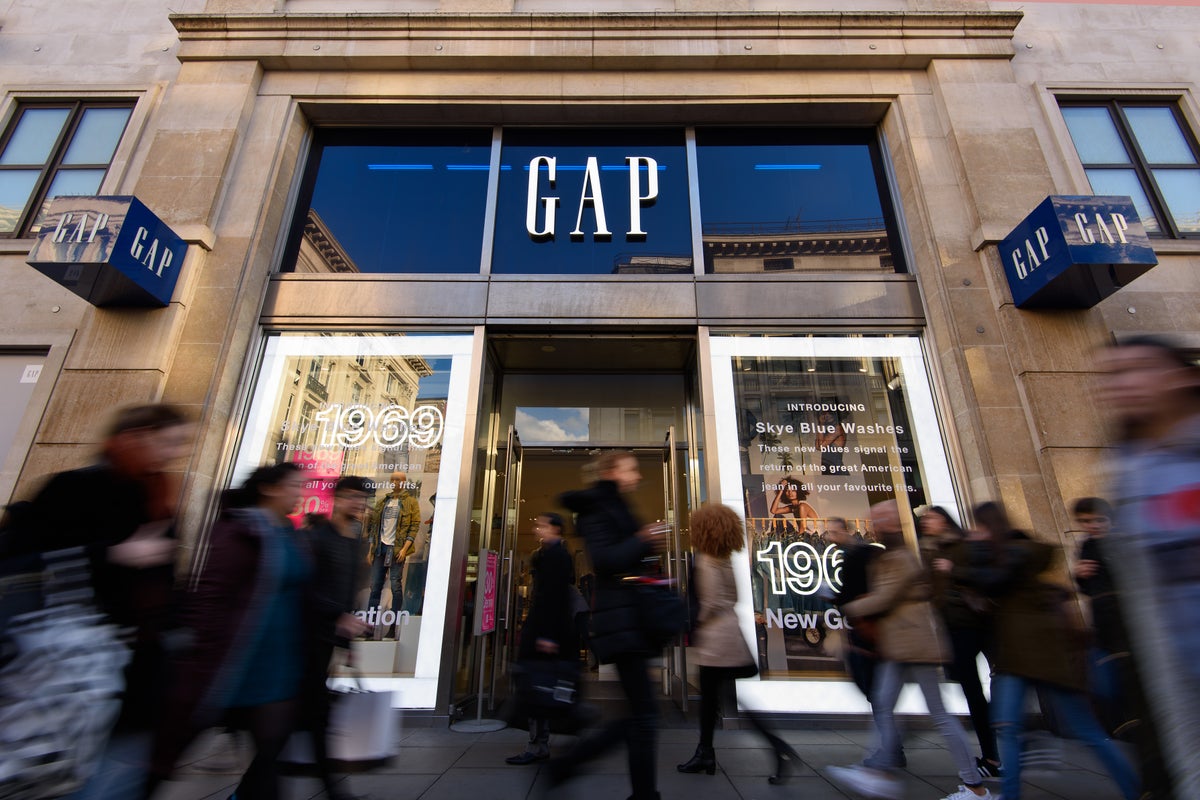Gap’s Attempt to Reclaim Coolness is a Desperate Bid to Manipulate Gen Z’s Identity Crisis
Gap, once a defining brand of the 1990s, is making a notable return to British high streets, with three new stores opening in London and plans for more locations to follow. This comeback is not just about reviving nostalgia; it’s a calculated effort to capture the attention of the TikTok generation, a demographic that is both influential and elusive. The brand’s strategy reflects a broader trend in the retail industry, where companies are increasingly attempting to adapt to the rapidly changing tastes and preferences of younger consumers.
The 1990s were a golden era for Gap, characterized by its iconic advertising campaigns, minimalist aesthetic, and a strong presence in popular culture. The brand was synonymous with casual American style, appealing to a wide audience with its denim, khakis, and logo sweatshirts. However, as fashion trends evolved and consumer preferences shifted, Gap struggled to maintain its relevance. The rise of fast fashion and the growing importance of sustainability in purchasing decisions left many traditional retailers, including Gap, grappling with declining sales and a loss of brand identity.
In recent years, Gap has made several attempts to reinvent itself, but these efforts have often fallen short. The brand has faced criticism for its lack of innovation and inability to connect with younger audiences. As social media platforms like TikTok have gained prominence, brands have had to rethink their marketing strategies to engage with a generation that values authenticity, creativity, and social consciousness. Gap’s latest move to open new stores in London is a response to this challenge, aiming to reposition itself as a relevant player in the contemporary fashion landscape.
Targeting the TikTok generation requires more than just a physical presence; it necessitates a deep understanding of the values and aspirations of young consumers. This demographic is not only concerned with fashion but also with the stories behind the brands they support. They seek brands that align with their values, whether that be sustainability, inclusivity, or social justice. Gap’s challenge lies in demonstrating that it can embody these principles while also delivering stylish and desirable products.
The new stores are designed to reflect a modern, inviting atmosphere that resonates with the aesthetic preferences of Gen Z. This includes a focus on experiential retail, where shopping becomes an engaging and interactive experience rather than a transactional one. In-store events, collaborations with local artists, and a strong social media presence are all part of Gap’s strategy to create a buzz and draw in younger customers.
However, the question remains whether Gap can successfully navigate this complex landscape. The TikTok generation is known for its fickleness and the speed at which trends can rise and fall. Brands that fail to keep up with the rapid pace of change risk being left behind. Moreover, Gap faces stiff competition from both established brands and emerging labels that are more in tune with the values of younger consumers. Many of these competitors have built their identities around sustainability and social responsibility, positioning themselves as alternatives to traditional retail giants.
Gap’s efforts to reclaim its coolness also come at a time when the retail industry is undergoing significant transformation. The COVID-19 pandemic accelerated shifts in consumer behavior, leading to a surge in online shopping and a reevaluation of what consumers want from their shopping experiences. Brands that can adapt to these changes and offer a seamless omnichannel experience are more likely to succeed in the current market.
In addition to its physical stores, Gap is also investing in its online presence, recognizing that a strong digital strategy is essential for reaching younger consumers. Social media marketing, influencer collaborations, and targeted advertising are all components of Gap’s approach to engaging with the TikTok generation. The brand must leverage these platforms to tell its story authentically and connect with consumers on a personal level.
As Gap embarks on this new chapter, it is essential to consider the broader implications of its comeback. The brand’s revival is not just about selling clothes; it represents a cultural moment where nostalgia meets modernity. The intersection of past and present in fashion is a powerful narrative that resonates with consumers, particularly those who are navigating their identities in a rapidly changing world.
The success of Gap’s strategy will ultimately depend on its ability to resonate with the values and aspirations of the TikTok generation. This requires a genuine commitment to understanding and addressing the issues that matter to young consumers, from sustainability to social justice. If Gap can successfully position itself as a brand that not only offers stylish products but also aligns with the values of its target audience, it may be able to reclaim its status as a cultural icon.
However, if the brand’s efforts are perceived as superficial or inauthentic, it risks alienating the very consumers it seeks to attract. The stakes are high, and the outcome of Gap’s comeback will likely serve as a case study for other brands navigating the complexities of modern retail. As the fashion landscape continues to evolve, the ability to adapt and resonate with consumers will be the defining factor for brands seeking to thrive in the 21st century.
The brand is back British high streets with three stores opening in London and more to follow – and this time it’s targeting the TikTok generation, writes Lydia Spencer-Elliott

